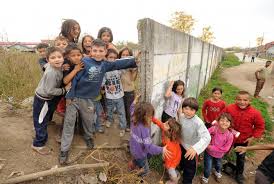Socio-economic status
The position of the Roma and their living conditions have been on the margins of social interest for years, which contributed to the significant deterioration of the quality of their life in relation to the average quality of life of the majority population. This applies to their status in society, the way in which their education, health and social care, ability to preserve their national identity, address status issues, employment, media presentation, political representation and the like are organized.
Social exclusion and poverty are much more widespread among the Roma than in other social groups. In the Roma community absolute deprivation far exceeds relative. It is estimated that 76% of the Roma and 20% of the rest of the population living close to Roma settlements live in absolute poverty. In addition, their poverty is often deep and permanent, affecting almost all aspects of life including housing, education, health, employment. Furthermore, the social exclusion of the Roma is multiple: political, financial, cultural, symbolic or spatial.

Still today, Roma segregation is present.
References:
HRVATIĆ, N. i IVANČIĆ, S. (2000). »Povijesno-socijalna obilježja Roma u Hrvatskoj«,
Društvena istraživanja, Zagreb, god. 9, br. 2-3(46-47), str. 251–266.
Izvješće o stanju u prostoru Republike Hrvatske, Ministarstvo zaštite okoliša i prostornog uređenja,
Zagreb, lipanj 2003.
ŠTAMBUK, M. (2000). »Romi u Hrvatskoj devedesetih«, Društvena istraživanja, Zagreb, god.
9, br. 2-3(46-47), str. 291–315.
Even today, the majority of Roma live in the so-called ''wild settlements''. Such ''villages'', except for the low standard of living, and mainly over construction of disorderly environment, are marked by the character of temporariness.
Read more